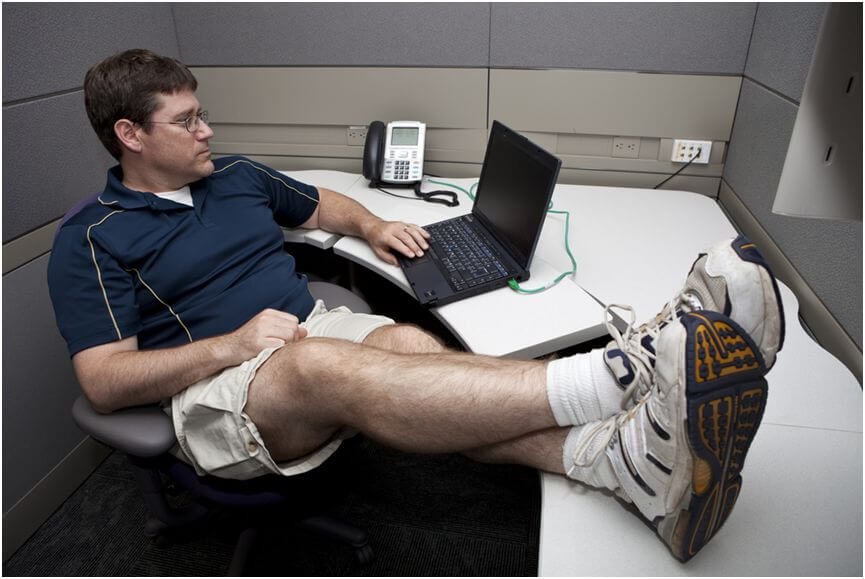In the past, all workplaces were basically the same. You came into the office, worked from 9-5, and repeated that same schedule from Monday to Friday.
Now that we’re in 2017, the office environment is going to change dramatically. These changes are primarily based on two main factors: technology and employee satisfaction. These elements will bring about flexibility in the workplace, as well as more benefits for employees, as the job market continues to improve.

As a manager, what can you expect in the modern workplace? How can you make the work environment more favorable so that you retain the best talent and stay competitive? How can you use technology to improve your employees’ working environment and help them maintain a work-life balance? Here are 10 trends to take note of as we start a new year full of possibilities.
1. Increase in popularity in the “blended workforce.”You’ll find that many companies are combining full-time permanent employees with freelancers. These freelancers may be working in the office or at a remote location, but they’ll be working on the same projects and teams as the permanent folks.
The freelance arena has exploded in the past few years, as many look for a work-life balance and the ability to raise children and make an income without having to resort to costly daycare. In fact, this has been one of the biggest workplace trends in recent years. It’s predicted that in several years, 40% of the workforce will be made up of freelancers.
It’s a win-win situation for employers and employees. Employers don’t have to pay benefits to freelancers, and freelancers get the flexibility they desire while making some extra cash.
2. Better experiences for candidates and employees. Employers are learning that better experiences equate to more loyalty and increased growth. Even candidates are getting better service, since a bad experience while applying for a job can discourage someone from ever applying for another job at that company again. In addition, if a candidate has a bad experience, they now have many opportunities to share their experience, like word of mouth, and on websites likecom and social media.
An improved job market means more opportunities for employees to find better employment opportunities elsewhere. To prevent retention issues, you’ll see employers looking to retain their current employees. They’ll accomplish this by increasing pay and benefits and adding flexible work options. Some companies have taken this a bit further and analyzed retention risk for employees in key roles so they can prevent them from quitting.
3. Creative perks and benefits. Instead of the traditional medical benefits packages and 401(k)s, companies are thinking outside the box to create unique benefits that will attract quality talent. Many companies, for example, offer free food, catered lunches, work from home days, scholarships, tuition reimbursement, stipends for technology, exercise programs, and more.
4. Focus on workplace wellness. Employees have become more health conscious in the past few years. As a result, companies are looking for ways to capitalize on the benefits of this trend. Having healthier employees means fewer absences and less money spent on healthcare. Companies are doing their part to create relaxing work environments that reduce stress.
5. Telecommuting and other flexibility options. The office will continue to be defined in 2017. Working full-time in a traditional office setting is going by the wayside. In fact, 34 million Americans work outside the office, whether their office is their home, a coffee shop, or hotel room. With technology such as video conferencing, email, and Wi-Fi, work can now be done anywhere and at any time.
If your company allows telecommuting, it’s important that your employees can get their work done efficiently. Make sure they have all the supplies they need to work from home, such as printer ink cartridges. That way, they won’t have to come into the office just to print a presentation.

6. Multiple generations in the workplace. Older employees will be having to deal with the different expectations that millennials and Generation Z employees have in the workplace. Younger employees expect flexibility, as well as more rewards and feedback. Younger employees also tend to be more socially aware, so they’ll be looking for ways to help their companies give back.
Naturally, older workers tend to label younger ones as lazy. This will lead to friction in the workplace, so it’s important for employers to find ways for everyone to get along and work together peacefully.
7. No more annual reviews. Tired of waiting an entire year to find out how you’re doing at work? So are many people, particularly millennials who thrive on instant gratification. Companies are abolishing this yearly review and, instead, are doling out feedback on a regular basis. In fact, 19% of employees are receiving feedback on a daily basis.
Adobe and GE are the first companies to do away with this process. While objectives are updated annually, feedback is given regularly.
8. Focus on team individual performance. Employers want teams who can prepare them for the future. Employees want to work in teams, just like they did when they played sports and other activities throughout their school years. Therefore, you’ll see a rise in companies focusing on teamwork rather than individual performers.
9. Increased use of virtual reality. Companies will be taking the lead from younger employees and incorporating virtual reality in the recruiting and training processes. This type of technology will enhance various experiences in the workplace. Expect virtual reality to become widely popular this year.

10. Casual work environment. With working from home becoming more of a trend, companies are ditching the suit and tie and allowing workers to sport jeans and t-shirts instead. Those working from home can even work in their pajamas. Expect to see less formal clothing in the workplace, which means more comfort for employees.
Today’s workplace is already much different than it was a decade ago. Time will tell what changes we can expect as we head toward 2025 and beyond.